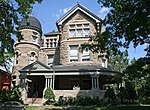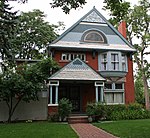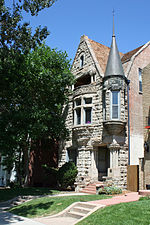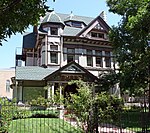Tiki Boyd's
2005 establishments in Colorado2006 disestablishments in ColoradoBuildings and structures in DenverDrinking establishments in ColoradoHistory of Denver ... and 1 more
Tiki bars
Tiki Boyd's was a tiki bar in Denver, Colorado in operation from 2005 to 2006. Experimental sound/noise musician Boyd Rice designed the bar, revamping the bar originally known as the East Coast Bar located in the Ramada Denver Downtown. A tiki enthusiast, Rice provided art from his personal collection for the bar. Rice is also a tiki scholar, having written an essay for Martin McIntosh's book, Taboo: The Art of Tiki. Lorin Partridge, a friend of Rice, tended the bar, and the bar was known for a drink called a Bronze Serpent. The music was played exclusively from vinyl including records by Martin Denny and Arthur Lyman, also from Rice's collection.
Excerpt from the Wikipedia article Tiki Boyd's (License: CC BY-SA 3.0, Authors).Tiki Boyd's
East Colfax Avenue, Denver
Geographical coordinates (GPS) Address Nearby Places Show on map
Geographical coordinates (GPS)
| Latitude | Longitude |
|---|---|
| N 39.739722222222 ° | E -104.9725 ° |
Address
East Colfax Avenue 1140
80218 Denver
Colorado, United States
Open on Google Maps










